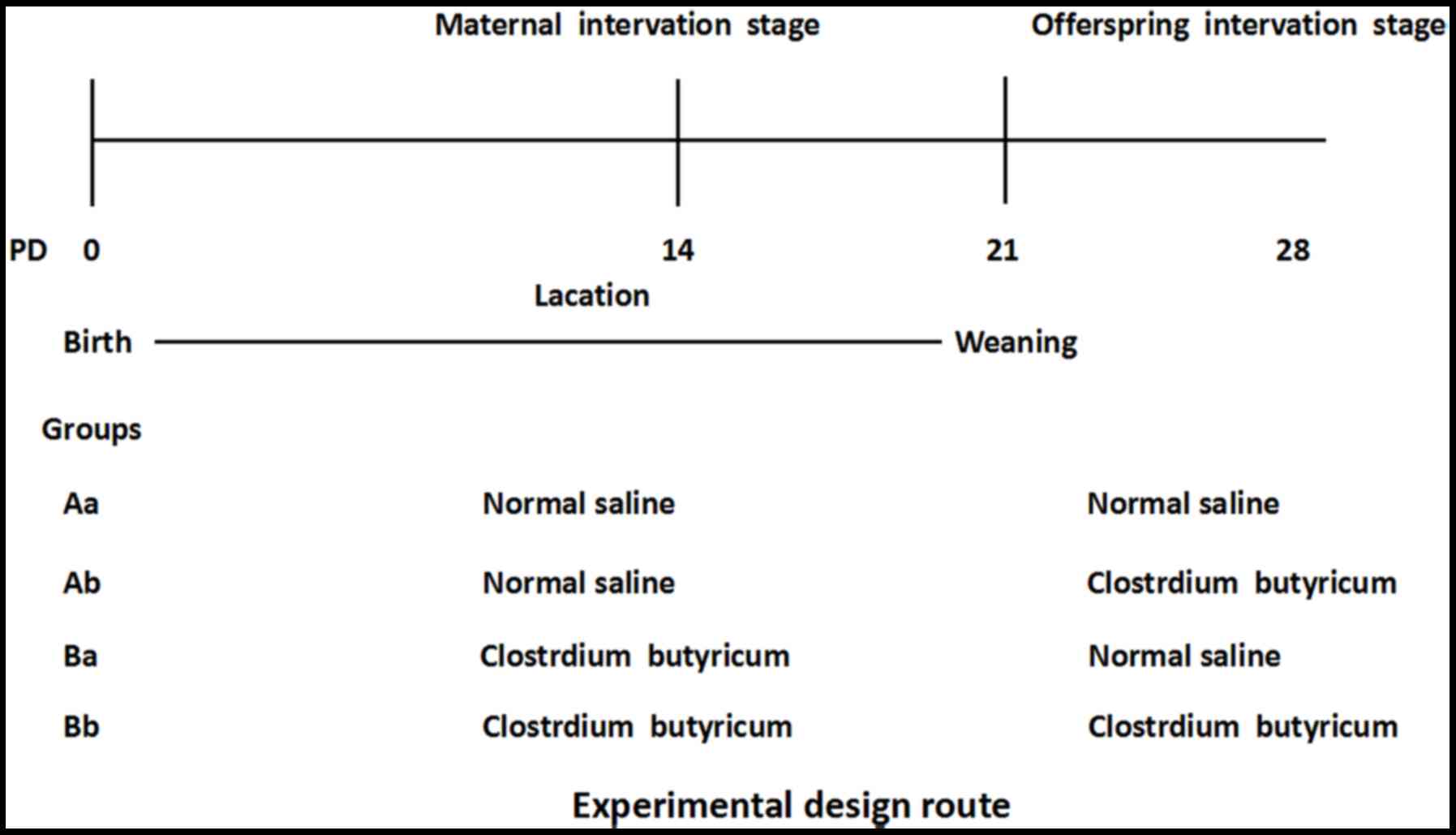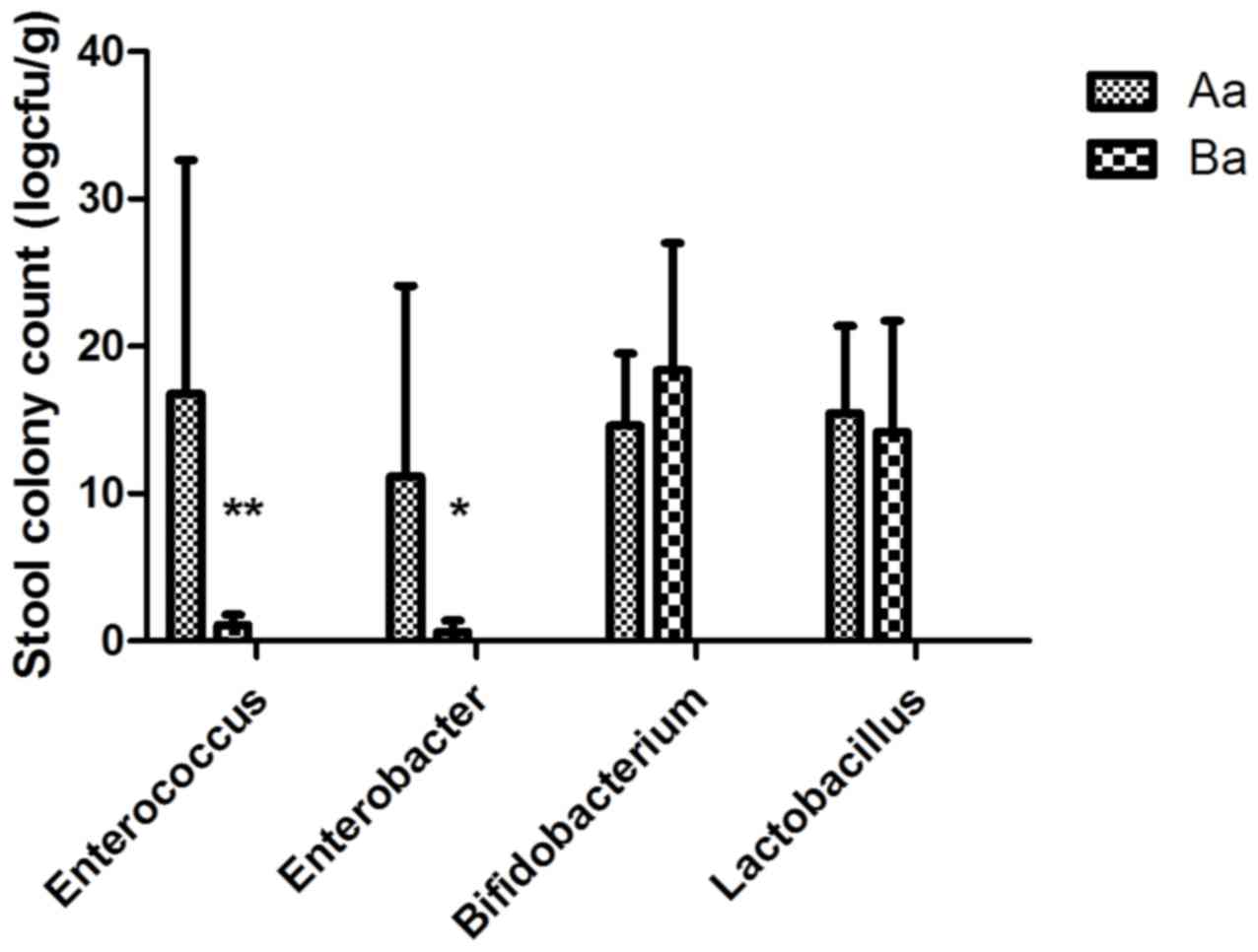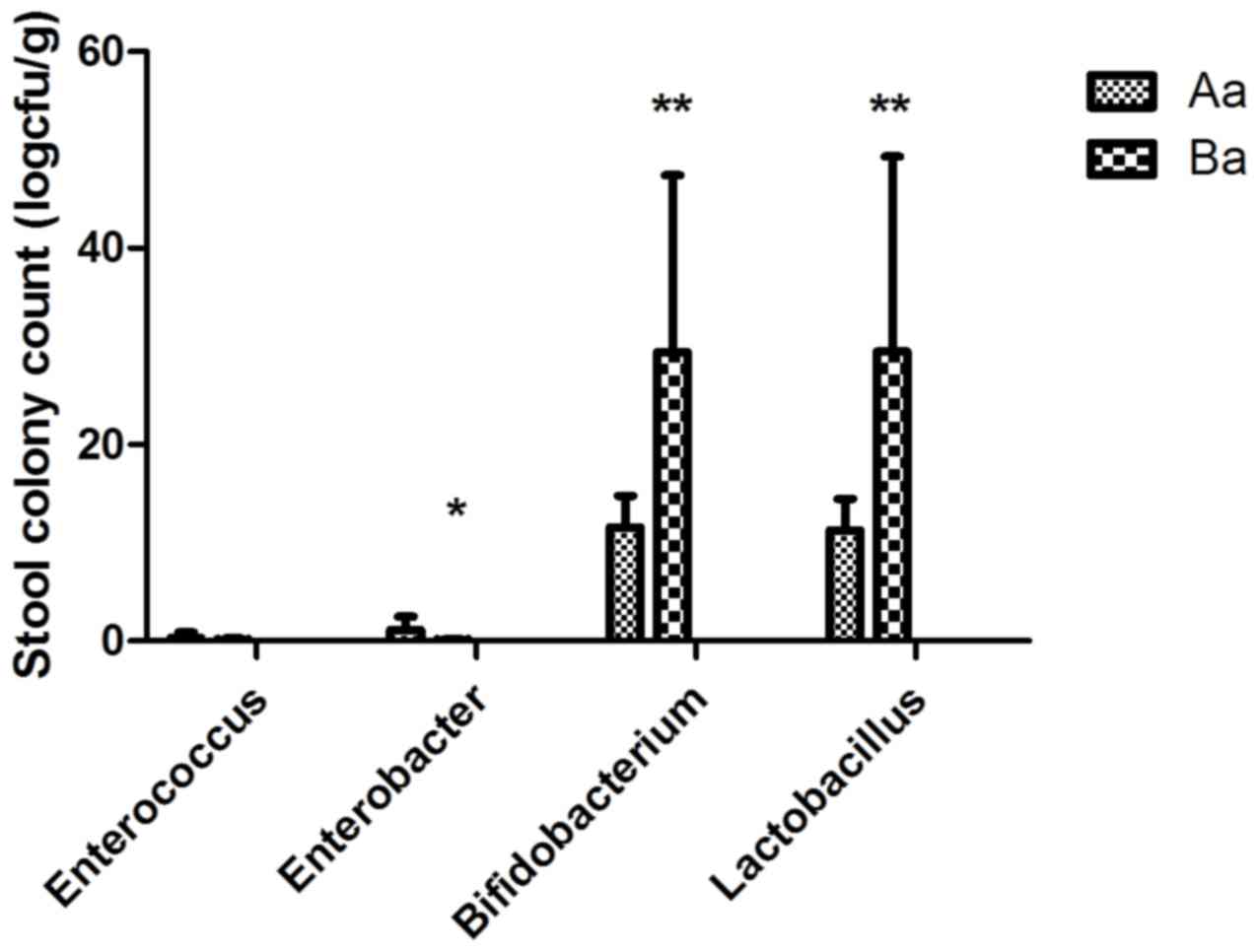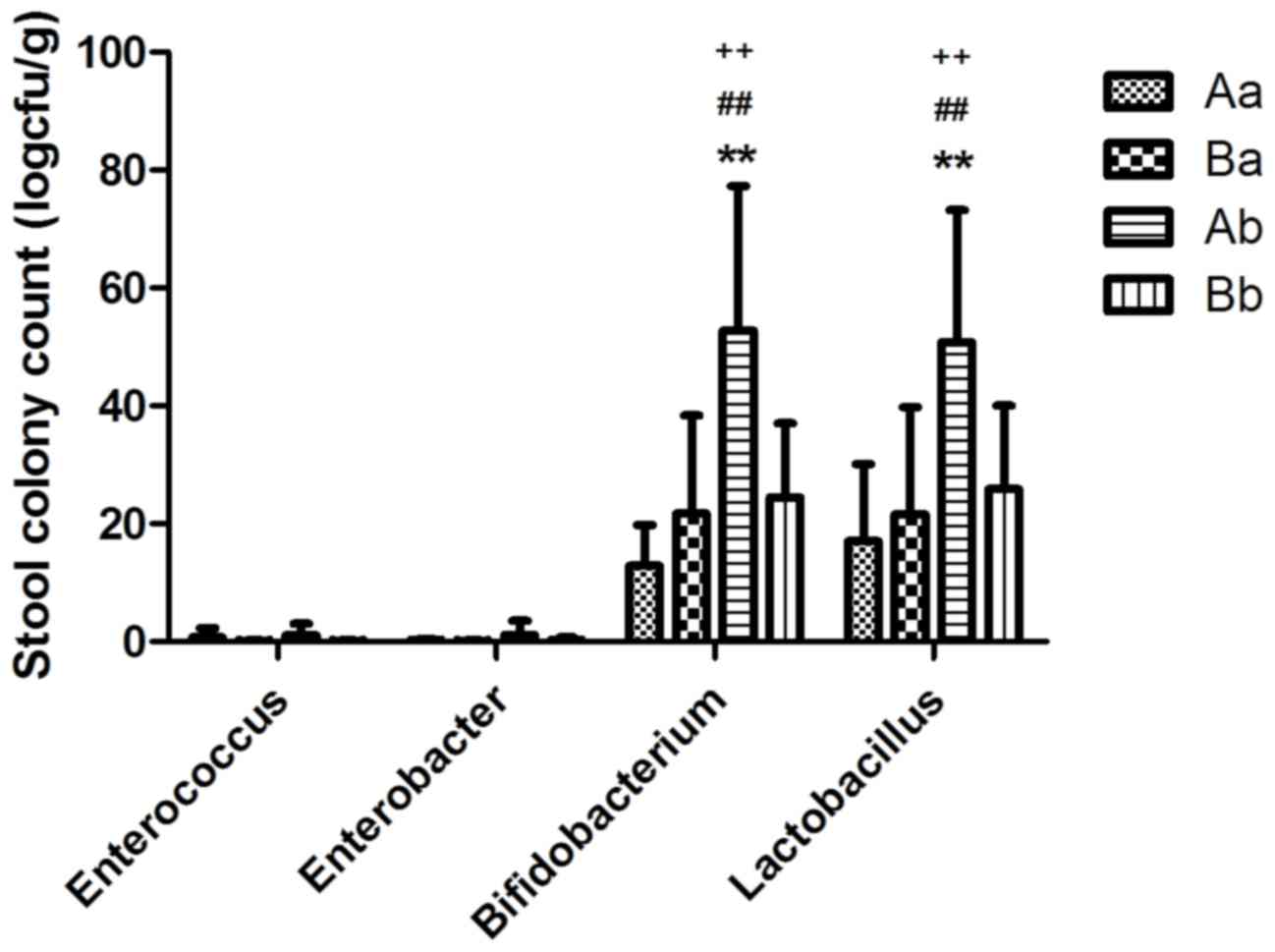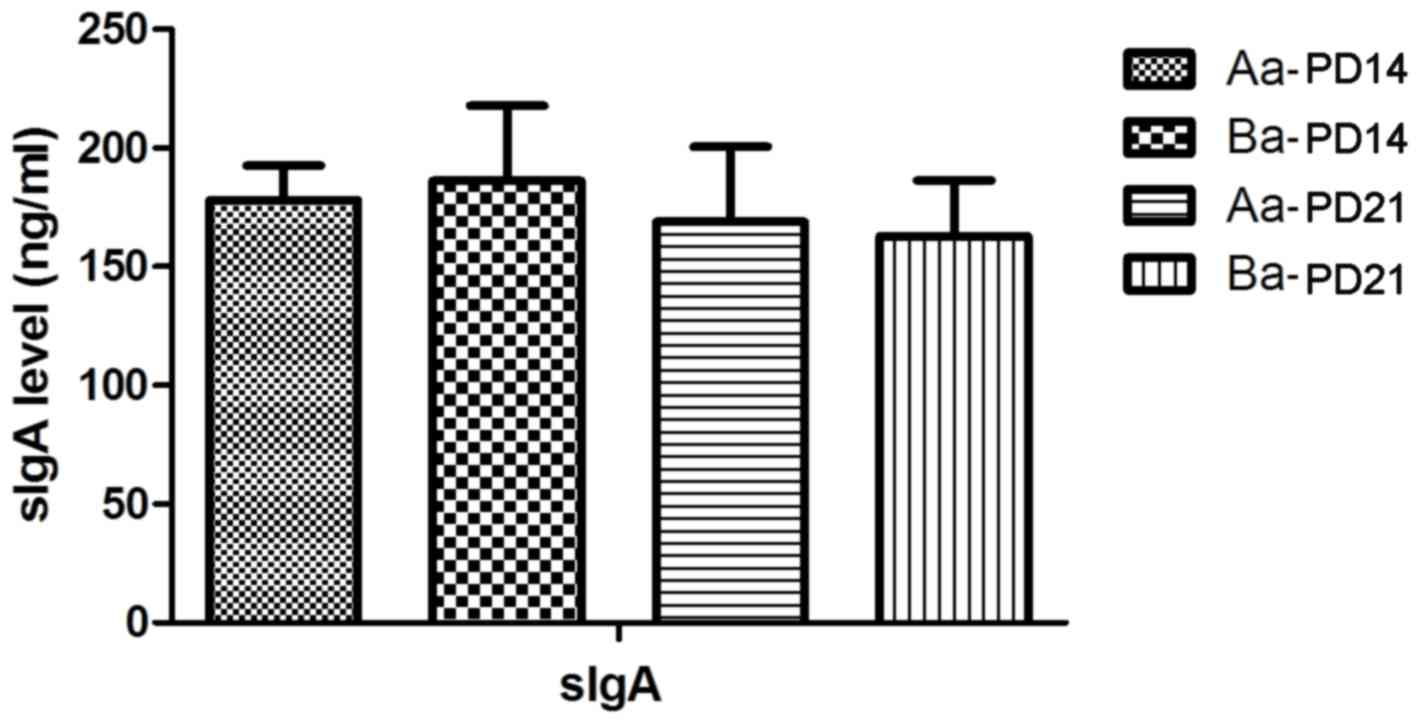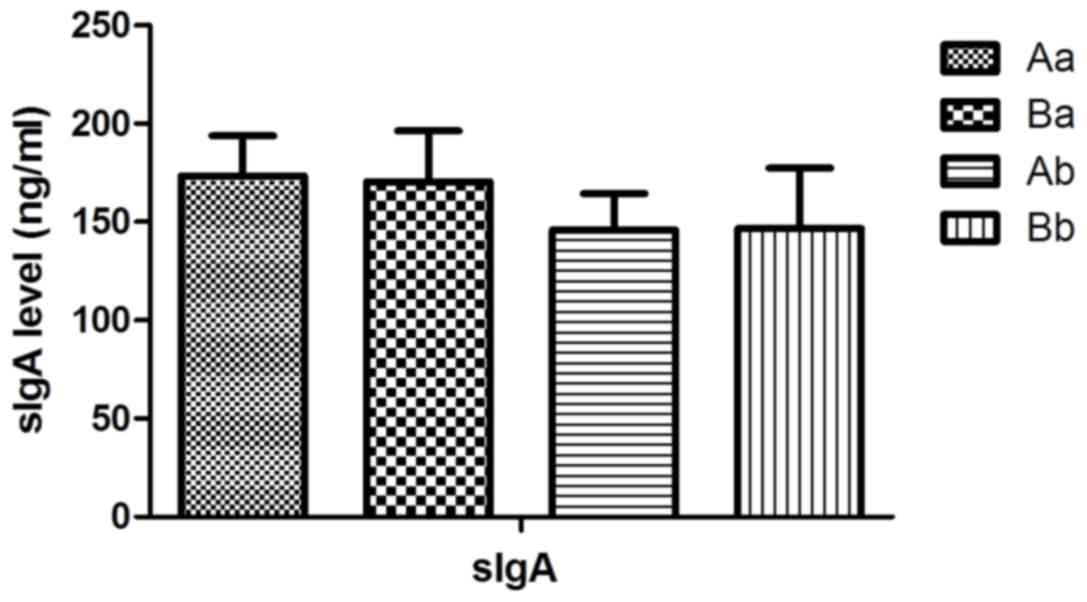Effect of Clostridium butyricum supplementation on the development of intestinal flora and the immune system of neonatal mice
- Authors:
- Published online on: November 7, 2017 https://doi.org/10.3892/etm.2017.5461
- Pages: 1081-1086
Metrics: Total
Views: 0 (Spandidos Publications: | PMC Statistics: )
Total PDF Downloads: 0 (Spandidos Publications: | PMC Statistics: )
Abstract
The objective of the present study was to examine whether Clostridium butyricum supplementation has a role in the regulation of the intestinal flora and the development of the immune system of neonatal mice. A total of 30 pregnant BALB/c mice, including their offspring, were randomly divided into three groups: In the maternal intervention group (Ba), maternal mice were treated with Clostridium butyricum from birth until weaning at postnatal day 21 (PD21) followed by administration of saline to the offspring at PD21‑28; in the offspring intervention group (Ab), breast‑feeding maternal mice were supplemented with saline and offspring were directly supplemented with Clostridium butyricum from PD21‑28; in the both maternal and offspring intervention group (Bb), both maternal mice and offspring were supplemented with Clostridium butyricum at PD 0‑21 and at PD21‑28. While mice in the control group were given the same volume of normal saline. Stool samples from the offspring were collected at PD14, ‑21 and ‑28 to observe the intestinal flora by colony counts of Enterococcus spp., Enterobacter spp., Bifidobacterium spp. and Lactobacillus spp. Detection of intestinal secreted immunoglobulin A (sIgA) levels and serum cytokine (interferon‑γ, and interleukin‑12, ‑4 and ‑10) levels in offspring was performed to evaluate the effect on their immune system. The results revealed that compared with the control group, offspring in the Ba group displayed significantly decreased stool colony counts of Enterococcus spp. (t=3.123, P<0.01) at PD14 and significantly decreased counts of Enterobacter spp. at PD14 and ‑21 (t=2.563, P<0.05 and t=2.292, P<0.05, respectively). Compared with the control group, the stool colony counts of Bifidobacterium spp. and Lactobacillus spp. were significantly increased in the Ba group at PD21 (t=3.085, P<0.01 and t=2.8508, P<0.05, respectively). The Ab group had significantly higher stool colony counts of Bifidobacterium spp. and Lactobacillus spp. at PD28, compared with the control group (Q=7.679, P<0.01 and Q=6.149, P<0.01, respectively). There were no significant differences identified in the sIgA levels of the intestinal fluid and serum cytokine levels between the control group and the intervention groups. In conclusion, Clostridium butyricum administered to breast‑feeding maternal mice was able to regulate the intestinal flora balance in their offspring. However, due to insignificant effects on sIgA level and the associated cytokines, Clostridium butyricum had a limited influence on the balance of type 1 vs. type 2 T‑helper cells. However, using Clostridium butyricum as an invention may be a safe method for improving the balance of intestinal flora and associated processes in offspring.



